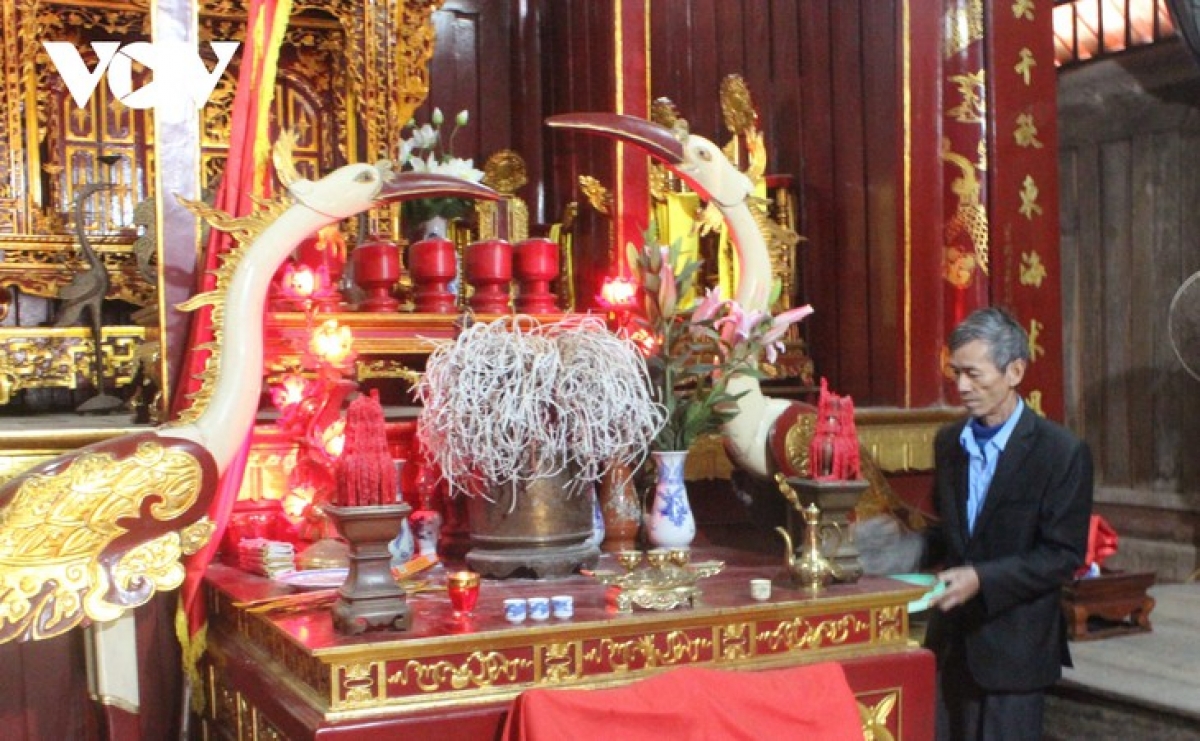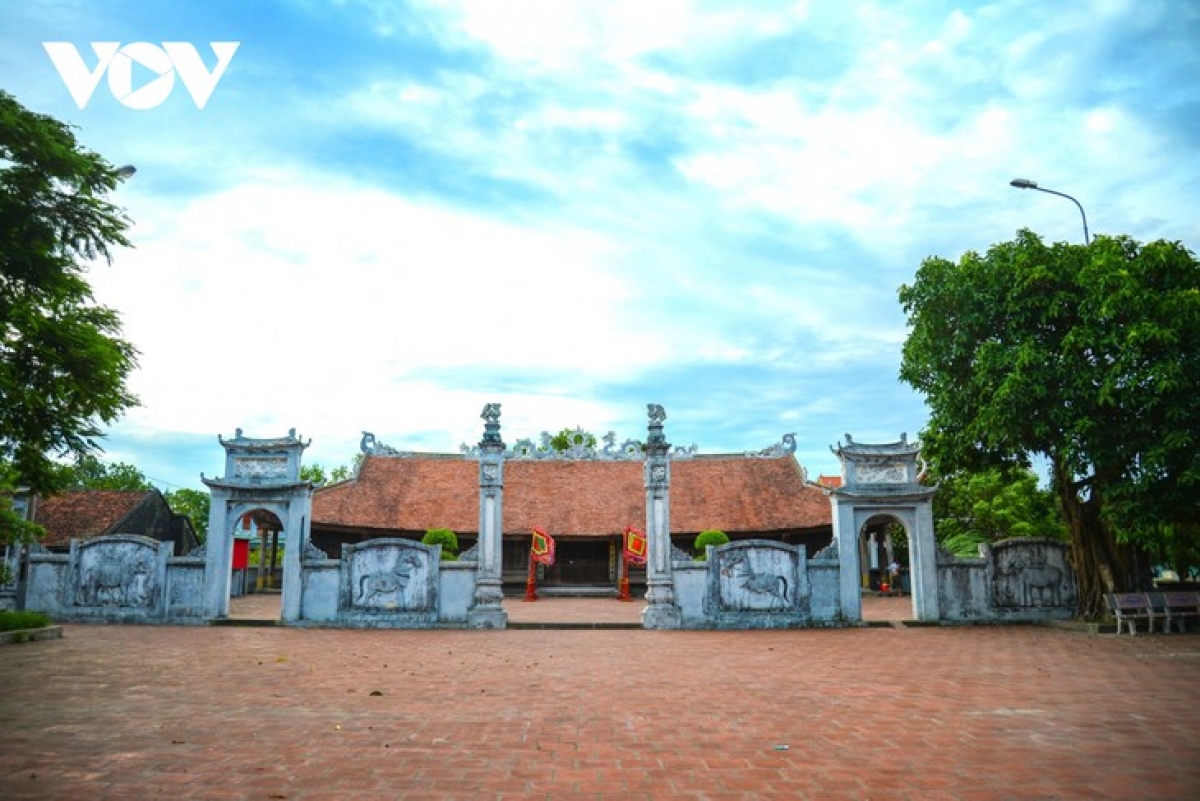With the typical architecture of a Vietnamese communal house, the 600-year old Tra Co communal house in Tra Co ward, Mong Cai city, Quang Ninh province, has become a popular religious and tourism site for visitors.

Nguyen Van Them is the caretaker of Tra Co communal house.
We visited Tra Co communal house on a foggy day. The air was filled with the fragrance of incense and ocean breezes. Nguyen Van Them, 70, the caretaker of Tra Co communal house, was cleaning the white incense dust that coats the altar and its carvings. When he was done with the cleanup, Them sipped a cup of tea with other elders of the village.
“Everyday I clean the communal house by myself. But 12 people do the cleanup before a festival or a lunar New Year holiday. The 12 men wash the worship items, pour water into the cups, burn incense, and fill the oil lamps. These men guard the communal house from the 25th day of the last lunar month until the first morning of the new year. On New Year’s Eve, local people come here to offer incense and pray for good luck,” said Them.
A poem goes “What benefits have we got from here? The fig buds taste astringent and hard. The elders say they are here just to admire the fairy-like natural landscape.”
This poem about the site has been passed down through generations. A legend says that in 1461, the rough sea swept away 12 fishermen’s families in Hai Phong province to a secluded island. Unable to bear the hardships, six families made their way back to their homeland, while the other six stayed and claimed a new land. The six simple cottages they occupied in the early days prospered into a wealthy village called “Tra Co”, taken from the names of the villages they were originally from.

Tra Co communal house spans 1,000 square meters.
According to villager Nguyen Quang Canh, the communal house was built in 1461 un the reign of King Le Thanh Tong to worship the village’s tutelary god and its six founders.
“King Le Thanh Tong was serious about border sovereignty. He swore to severely punish anyone who let foreign invaders intrude a single meter into his territory. The King built a communal house in the border area to conform to a law that, wherever there is a residential area, there must be a communal house to worship the deities and serve as a local administrative office, a venue for communal activities, and a resting place for feudal officials while on their tours,” said Canh.
Tra Co communal house has undergone several restorations but remains almost fully intact. Its architecture and carvings are bold in the Red River delta style. Inside the communal house hangs horizontal lacquered boards and gold-lacquered painted parallel sentences.
Canh explained “The sentences describe the formation of the village and the national spirit. Boards on the two sides of the communal house say villagers will forever live here and be blessed by the the earth and heaven gods. The sentence in the main chamber denotes the eternal prosperity of the nation and its people.”

Lacquered boards inside Tra Co communal house
In 2019, Tra Co communal house festival was recognized as a national intangible cultural heritage. Nguyen Van Phuoc, Chairman of the People’s Committee of Tra Co Ward noted that Tra Co communal house is being promoted to a wider audience, along with other tourist destinations in the area: Sa Vi cape, Tra Co beach, Nam Tho pagoda, and Ngoc cape.
Phuoc said “We will preserve and upgrade this relic site. We hope it will soon be on the radar of travelers.”